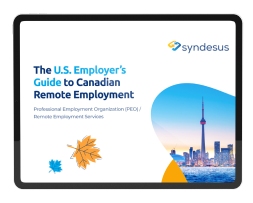It’s been a rocky road for the H-1B program. Former President Trump’s administration long sought to restrict foreign worker visas by issuing rules to restrict the H-1B program and stopping the issuance of some foreign worker visas, including H-1Bs and H-2Bs. And sure, there’s a new administration, but H-1B workers and the employers who hire them haven’t fully exhaled sighs of relief.
Since his inauguration, President Joe Biden has signed a flurry of immigration-related orders that seem to signal a willingness to expand visa protections. But what exactly has Biden done to boost the H-1B system?
Well, first Biden helped protect less-experienced international workers and small- or medium-sized US companies by delaying a Trump rule that seeks to replace the H-1B lottery with a wage-based system.
Biden also withdrew a Trump-era plan to end work authorization for certain dependent spouses of H-1B holders. This same bill would authorize H-1B holders’ dependents to work, protect H-1B holders’ aging children, and it would eliminate per-country visa caps.
He’s making progress, but Biden could retain some restrictive policies toward foreign workers.
For example, Trump’s rule requiring higher wages for H-1B workers is still set to take effect (although delayed), and Trump’s ban on work visas — which is set to expire in March — was never rescinded by Biden.
American companies — like Alphabet Inc.’s Google, Apple, and Facebook — are eager for more coders, engineers, and other skilled tech workers from countries like India because there aren’t enough skilled Americans. Unfortunately, this effort to expand the workforce through H-1B visas isn’t a high priority for Biden.
So, what can you do if your high-skilled H-1B workers want immigration stability? Here’s the solution: Keep your H-1B worker on staff, but move them to and hire them in Canada!
Skip the H-1B process and hire your tech workers from Canada through a PEO
Hiring a worker in Canada can be a breeze if you turn to a PEO for help. A professional employer organization — commonly referred to as a PEO — helps US-based companies remotely hire a professional abroad, in this case, Canada.
With a Canada-based PEO, it’s as if your company has an official legal presence in the country – the PEO hires your selected employee and keeps them on their payroll, but your US company pays their salary and manages their day-to-day tasks like any other employee.
The bottom line is that your H-1B tech workers keep their job and get to live in Canada, but believe it or not, this set-up benefits both you and all your employees.
There are plenty of very practical perks for hiring in Canada through a PEO, including assuming responsibility over all the nitty-gritty of employment like reporting wages, employment taxes, and payroll. A Canadian PEO can act on behalf of the US employer in employee disputes, workers’ compensation claims, and other legal disputes. Also, by combining the employees of many companies into one large group represented by the PEO, business owners are offered better rates on services like healthcare and workers’ compensation coverage.
And while the employer retains essential management over the employee, the PEO can cover human resource tasks like recruiting and hiring, drug testing, and family leaves. Today, PEOs offer employers much, much more than money-saving solutions.
The bottom line is that your H-1B tech workers keep their job and get to live in Canada, but believe it or not, this set-up benefits both you and all your employees.
Here’s how.
6 ways hiring in Canada helps both US tech employers and their H-1B visa tech employees
Despite the new administration in the US, there is still a lot of uncertainty surrounding work visas. Here are three ways US employers can benefit from hiring in Canada, and three ways employees can benefit from working remotely in Canada.
1. Take advantage of Canada’s booming tech industry
The tech industry across Canada is booming! Over the past five years, Toronto saw the biggest growth in technology jobs of any North American city. International tech giants like Google and home-grown startups like Shopify are expanding in Canada and adding jobs in droves. A diverse, highly skilled workforce depends heavily on good local universities, and Canada has the third-largest international student population in the world and many impressive universities with top-rated engineering programs.
But Canada’s Global Talent Stream (GTS) — a program designed to fast-track the entry of foreign workers with specialized skills — also deserves some credit for the country’s booming tech industry. Canada is working hard to make it easier for students, tech workers, and tech companies to call Canada home.
2. TN visa status makes returning to the US easy once the employee becomes a Canadian citizen
Canada is right next door to the US, so if it’s important to you that your employees occasionally meet in person at your US headquarters, then you can’t really find a more convenient location than Canada.
The United States Mexico Canada Agreement (USMCA) — an updated version of the North American Free Trade Agreement (NAFTA) — simplifies the movement of workers from Canada and Mexico into the US with a NAFTA visa known as a TN visa. So if your Canadian employee has a TN visa, they can easily return to the States when conditions allow or demand.
TN visa holders are able to hop across the border for business trips, or if the day comes when you want them back in the US office full-time, they’ll be able to legally re-enter the US and work here easily!
3. Your employees living in Canada will save everyone money
Living in the US is not cheap, especially in tech hubs like Silicon Valley that have become increasingly unaffordable. Encouraging your employees to live somewhere more affordable benefits both them and you — they get to save money on cost of living, and you have the option to save money on salaries and benefits.
Better yet, permanent residents in Canada will enjoy the benefits of a government-run single-payer system. The Canadian Institute for Health Information found that on average a Canadian spends $6,604 in taxes for healthcare coverage compared to more than an average of $10,000 per person that Americans spend on healthcare.
In Canada, many employers offer supplemental private health insurance to their employees but this is still significantly cheaper than what US employers spend on healthcare. The average total cost of employer-provided health coverage in the US passed $20,000 for a family plan. You read that right – twenty-thousand US dollars.
4. Workers will avoid immigration uncertainty in Canada
Despite immigration taking a pandemic-related hit, the efficiency and flexibility of Canada’s immigration program has allowed it to respond to urgent global talent needs during its fight against Covid-19.
The goal of the GTS program is to expedite and ease the processing time for visa and work permit applications for foreign nationals who possess unique talents or are highly skilled. The typical timelines are 10 business days to assess applications and 14 business days to process work permits for qualified workers.
Looking to stay in Canada long-term? If you qualify for Express Entry or the Provincial Nominee Program (PNP), you could apply for permanent residence within months rather than years.
5. Become a Canadian citizen in five years
Once you’re a permanent resident, it’s relatively easy to become a Canadian citizen.
If you’ve lived in Canada for at least 1,095 days out of five years you could be one of the thousands of new citizens Canada welcomes each year. Currently, Canada prioritizes young, highly-skilled workers with Canadian experience for permanent immigration, so participating in GTS is a smart way to set yourself up for a future in Canada.
6. Get a quality of life boost in Canada
Happy employees are productive employees — it’s science! Workers who self-reported as being very happy are 13% more productive than “very unhappy” employees, and it turns out that Canadians are some of the happiest people in the world.
The annual World Happiness Report ranked 156 countries using the Gallup World Poll and six factors: levels of GDP, life expectancy, generosity, social support, freedom, and income. In 2020, the US ranked the 18th happiest country in the world. Canada was number 11 on the list, so I guess that means they’re some of the world’s happiest workers!
As you can see, there are plenty of reasons to skip the H-1B drama and move your H-1B workers up to Canada instead.
Avoid H-1B drama and move your H-1B tech workers to Canada with Syndesus
As demand for tech labor increases, American businesses need to stay nimble to ensure that they keep their best talent. Some of the best and brightest workers are H-1B workers, but unfortunately keeping these workers in the US isn’t always easy. Considering how unpredictable the US immigration system can be for this type of visa, it’s wise to have a backup plan.
Canada offers solid H-1B alternatives!
With Syndesus, your H-1B workers can apply for a Canadian visa (which is typically easier to get), relocate to Canada, and continue to work for your American company. In a year of crazy twists and turns, working with Syndesus to employ Canadian workers might be the easiest, most straightforward thing you do.
Want to hear more? Book a consultation to chat about your hiring situation. Syndesus can help you expand your team with the world’s most talented technology professionals but without the world’s most frustrating immigration system.




